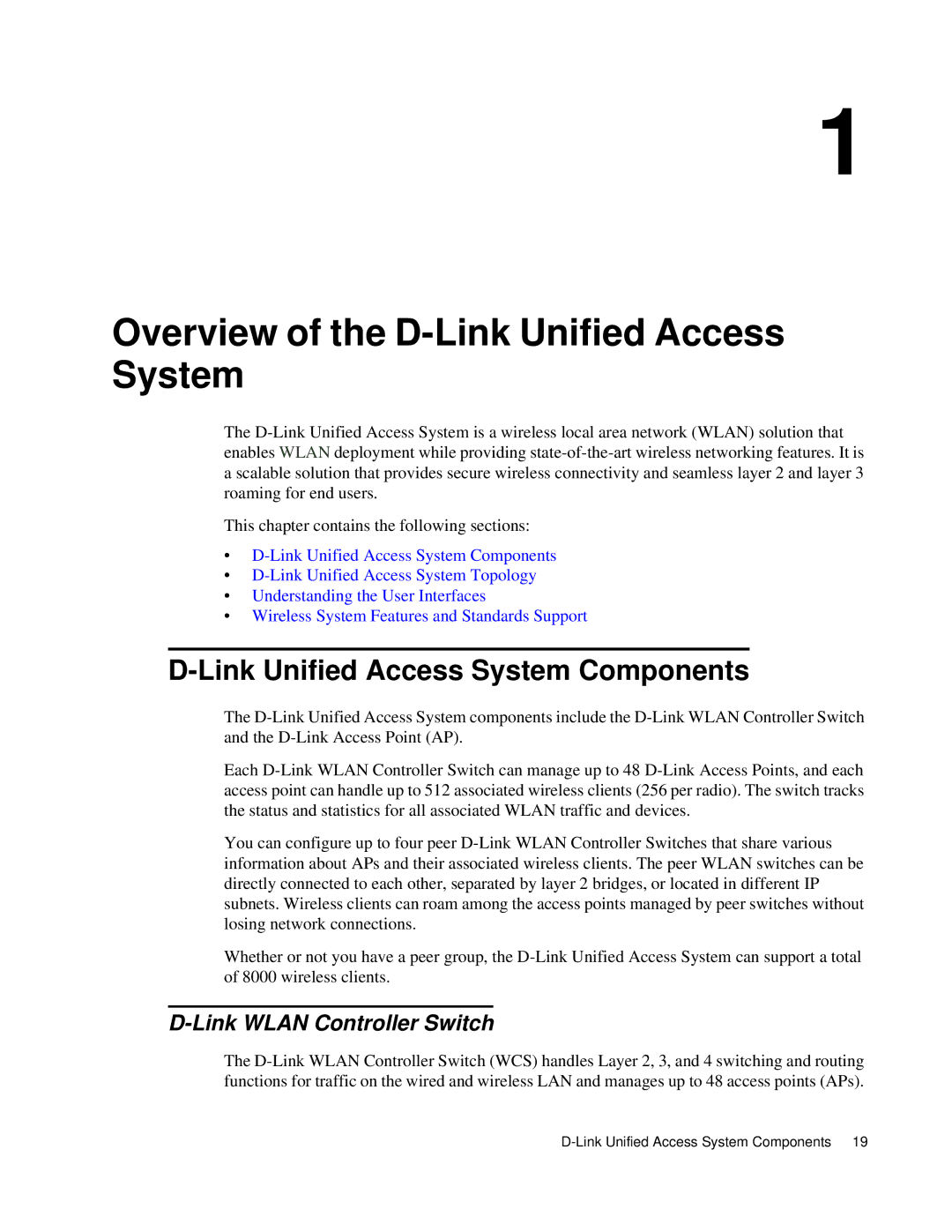
1
Overview of the D-Link Unified Access System
The
This chapter contains the following sections:
•
•
•Understanding the User Interfaces
•Wireless System Features and Standards Support
D-Link Unified Access System Components
The
Each
You can configure up to four peer
Whether or not you have a peer group, the
D-Link WLAN Controller Switch
The
